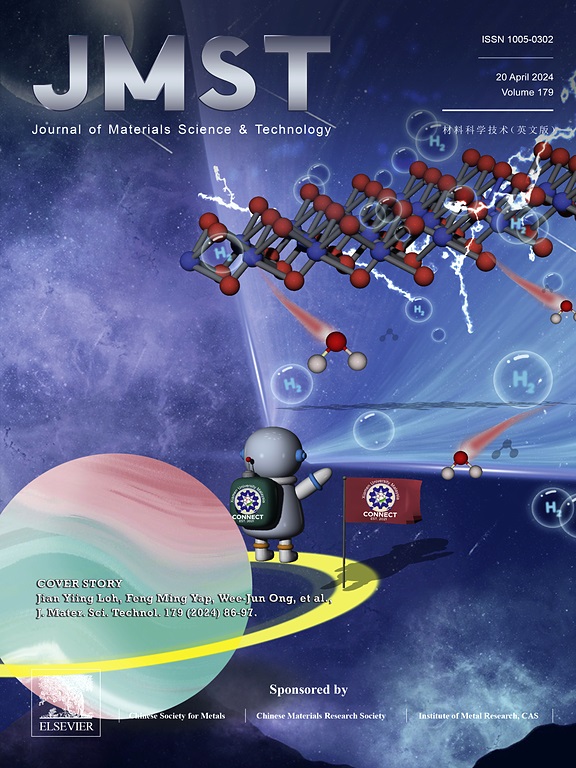辐照赤铁矿表面碳层电子注入高效太阳水氧化的原位观察
IF 11.2
1区 材料科学
Q1 MATERIALS SCIENCE, MULTIDISCIPLINARY
引用次数: 0
摘要
原位观察赤铁矿的电荷传递对了解赤铁矿太阳水氧化机理具有重要意义。本文利用原位x射线吸收光谱(XAS),可以清晰地识别赤铁矿照射后的电子(光子激发电子)向表面碳层的注入,从而促进电荷分离,进而提高性能。结果表明,碳包覆掺杂锡赤铁矿光阳极(C-Sn-Fe2O3)在1.23 VRHE下光电流密度显著提高,达到2.3 mA/cm2,是原始赤铁矿的2.3倍。注入的电子可以修饰碳层表面基团的化学状态,并由于碳层的高导电性迅速转移到电极上,留下具有高氧化能力的高价Fe4+,从而增强性能。通过与FeNiOOH共催化剂的耦合,光阳极最终可以在1.23 VRHE下获得3.0 mA/cm2的高光电流密度,而起始电位仅为0.76 VRHE。利用原位XAS技术了解电荷迁移路线,为高效太阳能水氧化材料的设计提供了一条新途径。本文章由计算机程序翻译,如有差异,请以英文原文为准。

In-situ observation of electron injection to surface carbon layer from illuminated hematite for efficient solar water oxidation
In-situ observation of the charge transfer plays a key role in understanding the working mechanism of hematite for solar water oxidation. Here by using in-situ X-ray absorption spectroscopy (XAS), the electron injection from illuminated hematite (photon-excited electron) to the surface carbon layer can be clearly identified, which can facilitate the charge separation and then improve the performance. As a result, the carbon-coated and Sn-doped hematite photoanode (C-Sn-Fe2O3) shows a greatly enhanced photocurrent density of 2.3 mA/cm2 at 1.23 VRHE, which is 2.3 times that of the pristine hematite. The injected electron can modify the chemical state of surface groups in the carbon layer and be quickly transferred to the electrode due to the high conductivity of the carbon layer, leaving behind the high-valence Fe4+ with high oxidation capability to enhance the performance. By coupling with the FeNiOOH co-catalyst, the photoanode can finally achieve a high photocurrent density of 3.0 mA/cm2 at 1.23 VRHE with a low onset potential of 0.76 VRHE. The understanding of the charge migration route by using in-situ XAS offers a novel way for the design of highly efficient solar water oxidation materials.
求助全文
通过发布文献求助,成功后即可免费获取论文全文。
去求助
来源期刊

Journal of Materials Science & Technology
工程技术-材料科学:综合
CiteScore
20.00
自引率
11.00%
发文量
995
审稿时长
13 days
期刊介绍:
Journal of Materials Science & Technology strives to promote global collaboration in the field of materials science and technology. It primarily publishes original research papers, invited review articles, letters, research notes, and summaries of scientific achievements. The journal covers a wide range of materials science and technology topics, including metallic materials, inorganic nonmetallic materials, and composite materials.
 求助内容:
求助内容: 应助结果提醒方式:
应助结果提醒方式:


